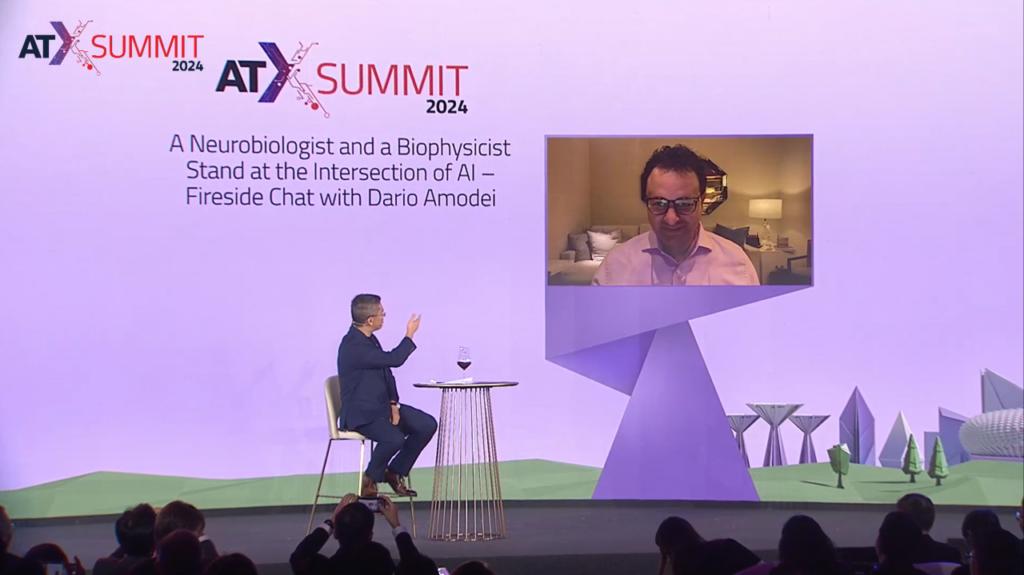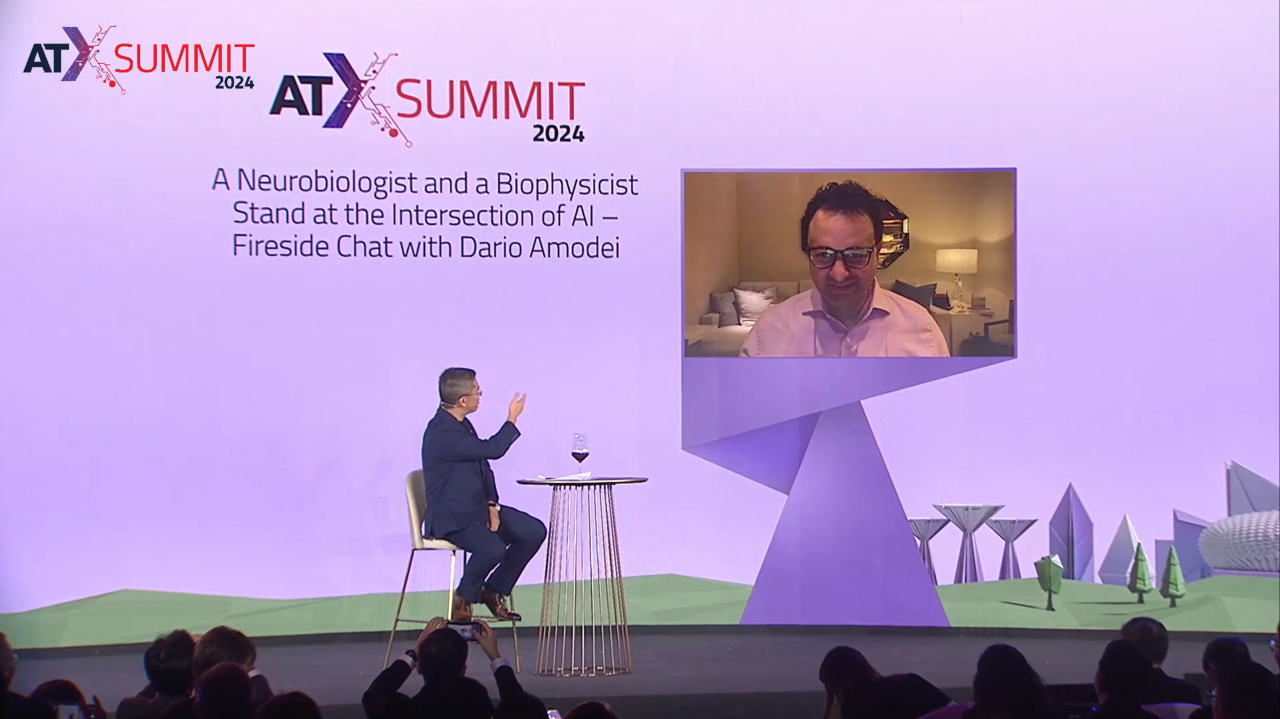
I had the pleasure of watching Dario Amodei ’s insightful fireside chat with IMDA Chief Executive Chuen Hong Lew “A Neurobiologist and a Biophysicist Stand at the Intersection of AI”, where they talked about the current state and future prospects of AI. Here are some of the most compelling takeaways from the discussion :
- Anthropic’s Foundational Hypotheses
Dario underscored two core beliefs driving Anthropic:
- Scale Drives Outcome: A widely shared view among AI labs, emphasizing that larger models and more data yield better results.
- AI’s Societal Impact: AI will have a profound societal impact and must be controllable. Dario likened AI development to building a powerful rocket—if we can’t steer it, we won’t reach our desired destination.
- Scaling Laws and Emerging Capabilities
Dario highlighted two “magical and mysterious” aspects of Large Language Models (LLMs):
- Predictable Scaling: Outcomes improve predictably with more data and larger model sizes, a surprising shift from past AI developments.
- Emergent Abilities: As models scale, they develop unexpected capabilities (e.g. coding, maths, etc.), despite only being trained to predict the next token. The reasons for these emergent abilities remain unclear, but scaling consistently enhances performance.
- Potential Bottlenecks in Scaling
Dario discussed three potential constraints in the continued exponential growth of AI:
- Data Availability: Freely available web data might be exhausted within 1-2 years. However, synthetic data offers a promising alternative.
- Compute Resources: Energy production for compute is poised to become a bottleneck, but advancements are expected to alleviate this.
- Algorithm Efficiency: Current algorithms like transformers are still effective, and Dario sees no reason why they won’t continue to scale.
- Synthetic Data and Avoiding “Genetic Collapse”
Dario addressed concerns about AI-generated data causing “genetic collapse” if the web becomes mostly populated by such content. He proposed watermarking as a solution to this problem, and then drew parallels to AI training methods like self-play in Go, which achieved superhuman performance with a simple(r) dataset input (the rules of the game).
- The Concept of AGI
The term AGI (Artificial General Intelligence) has evolved. With the rise of general models, the distinction between narrow AI and AGI is blurring. Dario suggested that incremental progress (a “slowly rising tide” were his words) will drive significant advancements, particularly in fields like medicine and scientific discovery.
- Reasoning and Planning in Current Models
Today’s models can reason, though not optimally. Dario sees no fundamental barriers in transformers to further increasing model intelligence, with innovations potentially accelerating progress further.
- Alignment and Safety
A core mission for Anthropic is AI alignment. They are developing “constitutional AI,” inspired by Asimov’s laws of robotics, to embed ethical rules into AI models. They could allow enterprises to tailor these constitutions to their specific needs.
- Addressing Hallucinations
AI models still struggle with hallucinations. Anthropic’s approach to explainability, through “mechanistic interpretability,” may help. Their recent research showed that models have neurons for features like truth and lies, and that sometimes they know they are lying (hallucinating), and sometimes they actually believe their hallucinations. Further understanding these should help reduce hallucinations.
- Model Evaluation and Regulation
Dario emphasized the importance of robust model evaluation (both in terms of performance and risks) and third-party testing. A very good point that was made is that if we can’t crack the measurement problem, we will be unable to regulate efficiently : either rules will be overly lax or they will stifle innovation if not properly calibrated.
- Mechanistic Interpretability
Anthropic recently published a fascinating paper on dictionary learning (“Towards Monosemanticity: Decomposing Language Models With Dictionary Learning”). This work, akin to using fMRI in neuroscience, aims to decode which neurons activate for specific tasks. Anthropic found mathematical methods to identify what neurons activate, and which “features” they represent (examples given were around concepts of fast vs slow, of truth, with a very interesting example on “golden gate bridge”, read the paper to know more !!).
This groundbreaking research is just beginning and holds promise for making AI more explainable and trustworthy, and therefore used in areas where it cannot be considered today.
- Societal Impact
Dario is optimistic about AI’s enormous benefits in health, innovation, and science. However, he noted two types of risks:
- Concentrated Risks: Misuse of models and biases.
- Diffuse Risks: Broader economic and societal impacts, which are harder to predict and manage.
- Anthropic’s and AI’s Future Directions
Anthropic plans to release frequent, smaller updates to improve model quality and safety. Significant progress in “mechanical interpretability” is expected in the next 1-2 years.
Lastly, advancements in agents and embodiment are areas to watch.
In summary, Dario Amodei ’s talk was a deep dive into the promises and challenges of AI. Anthropic’s focus on explainability, alignment, and sustainable scaling underscores their commitment to harnessing AI’s potential responsibly.
I have more detailed notes on the topics discussed, feel free to reach out if you have any thoughts or want to discuss further!
(any mistake in the above is most certainly from my own retranscription, and not from original speakers ! ^^)
